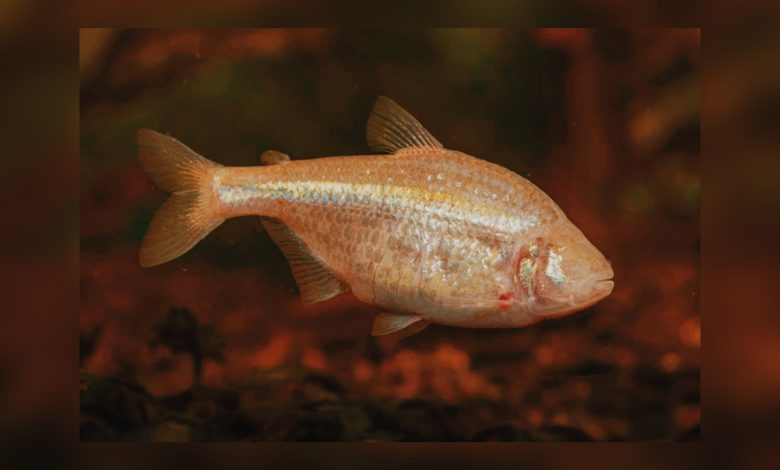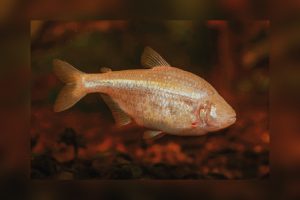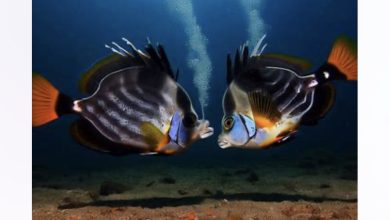What Do You Call a Fish With No Eyes?

Have you ever heard of a fish with no eyes? Sounds like a riddle, doesn’t it? But it’s actually a real thing! These fish are called blind fish, and they’re pretty interesting creatures. Let’s dive into the world of blind fish and see what makes them so special. Sullpet
What Do You Call a Fish With No Eyes? A fish with no eyes is often called a fish, commonly known as cavefish, blindfish, or swampfish. There are actually many species of fish that live in dark or murky` environments, such as caves or deep ocean trenches, that have adapted to living without eyesight. These fish often have other sensory organs that they use to navigate and find prey, such as a heightened sense of smell or the ability to detect electrical impulses.
What Are Blind Fish, Anyway?
So, what exactly is a blind fish? Well, it’s pretty much what it sounds like. It’s a fish that doesn’t have functioning eyes. You might be wondering how they navigate their underwater world without eyesight. Well, blind fish have adapted to their environment in some pretty cool ways.
Some species of blind fish use other senses, like smell and hearing, to find food and avoid predators. Others have developed sensory organs on their heads that can detect changes in water pressure and electric fields. It’s like they have a built-in GPS system! Pretty clever, right?
Why Study Blind Fish?
Aside from being fascinating creatures, blind fish are actually important for a few reasons. For starters, they help us understand evolution and adaptation. Scientists are still trying to figure out how these fish lost their eyes in the first place. It’s a puzzle that can teach us a lot about the way organisms evolve and adapt to their environment.
Blind fish also play an important role in their ecosystems. As top predators or prey, they can affect the balance of their communities. For example, the loss of Mexican tetras from a cave system in Texas led to an increase in crayfish populations and a decrease in other fish species.
Blind fish are also sensitive to changes in their environment, so studying them can help us monitor the health of ecosystems and identify potential problems.
Finally, blind fish could even help us improve human health! Researchers have found that some of the genes and biology of blind fish can provide insights into human vision health and disease. By studying these fish, we can learn more about the genetics of retinal diseases and develop new therapies.
ALSO RAED
- Does Vinegar Really Stop Cats from Pooping?
- How Long Will a Cat Hide if Scared Outside
- How to Tell If Your Cat Still Has Kittens Inside
Protecting Blind Fish Populations
Unfortunately, blind fish populations are threatened by human activities like pollution, habitat destruction, and overfishing. It’s important that we take steps to protect these fish and their ecosystems.
Some conservation measures that have been proposed or implemented for blind fish include creating protected areas and sanctuaries for cave and underground river ecosystems, monitoring water quality, and developing sustainable fishing practices.

Examples of Blind Fish Species from Around the World
Blind fish come in all shapes and sizes, and they can be found in many parts of the world. Some of the most famous blind fish species include:
The Mexican tetra, also known as the blind cavefish, which inhabits dark freshwater caves in Mexico and Texas.
The deep-sea dragonfish, which lives at depths of up to 5,000 feet and uses bioluminescence to attract prey.
The electric fish, which produces electrical discharges to navigate and communicate in murky waters.
The blind goby, which lives in underground rivers and relies on chemosensation to find food.
Each of these species has its own unique features and adaptations that make it well-suited for its environment.
The Fascinating Adaptations of Cave-Dwelling Blind Fish
One of the most intriguing groups of blind fish is the cavefish, which live in pitch-black underwater caves and tunnels.
These fish have undergone dramatic changes to their anatomy and behavior to cope with their extreme habitat. For example, they have lost their pigmentation, which is not necessary for complete darkness, and their eyes, which can become vulnerable to injury and infection.
They have also developed a range of sensory organs and behaviors to navigate and interact with their environment, such as:
A heightened sense of smell to detect food and mates.
A sensitive lateral line system to detect vibrations and currents.
A unique swimming style that allows them to move in any direction, even upside down.
A specialized feeding behavior that involves scraping algae and biofilm off rocks and other surfaces.
The Genetics of Eye Loss in Fish and Other Animals
The loss of eyes in blind fish is not just a random occurrence, but a complex and fascinating process that involves genetics, development, and evolution. Scientists have been studying blind fish genetics for decades, hoping to uncover the genes and mechanisms that control eye formation and regression. Some of the findings include:
The role of Pax genes, which regulate eye development in many animals, in the reduction or loss of eyes in blind fish.
The importance of gene duplication, mutation, and selection in creating new eyeless or reduced-eye phenotypes.
The potential for blind fish genes to shed light on human eye diseases and development.
How Blind Fish Challenge Our Understanding of Evolution
Blind fish are not only interesting scientific subjects, but they also challenge our understanding of evolution and adaptation. The loss of a seemingly vital organ like the eye raises questions about the trade-offs between function and resource allocation, as well as the predictability and reversibility of evolution.
Blind Fish also highlights the importance of niche specialization and environmental factors in shaping the course of evolution.
Conclusion ON What Do You Call a Fish With No Eyes?
So, there you have it! Blind fish may not have eyes, but they’re still pretty cool creatures. Whether you’re interested in evolution, ecology, or human health, blind fish have something to offer. Plus, they’re a great reminder of the incredible diversity of life on our planet.






One Comment